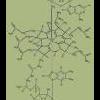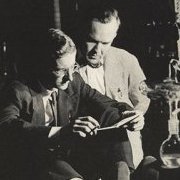Honestly. I go away to do science for a week, and people start topics that I can answer, but that have already been answered. (I'm looking at you, Horza).
I literally just presented a lecture on this subject 2 days ago.
Dan, you mentioned chiral solvents. They are expensive and useless and deuterated NMR solvents would be even more expensive. As Horza said, the use of chiral NMR solvents isn't particularly useful for the large and complex molecules we like to try and make. In terms of their use as an asymmetric synthetic promoter, they are probably one of the most daft agents out there. It costs more money to obtain something that is enantiomerically pure than not, as I mentioned. Solvents being used in large quantities compared to the rest of the components of your reaction makes the whole concept ridiculously unfeasible. In my research for the lecture I presented on Wednesday, I was in fact only able to come up with one paper that used a chiral solvent in their reaction. The thing I found really laughable was that it didn't even work on its own. To give an ee of above 80%, the reaction needed a catalytic amount of enantiomerically pure proline.
There is another reason why we use racemates. Horza eluded to the fact that we often do not know which stereoisomer we want. Depending on what your product is designed to do, this may mean that we don't know which stereoisomer confers bioactivity or 'gives the best result' (most natural products we synthesis are studied because of their medicinal properties - it's how we gratuitous chemists get money to do science). Even if we did have an inclination as to which stereoisomer we wanted, we have to be able to present a full activity profile of the compound we are making - and that includes all possible stereoisomers. If we can't do that, it doesn't bode particularly well for in the case where we want to push it through the rigour of the drug design and development process.
If you wanted to synthesise a single enantiomer of something, then there are many ways you might choose so as to achieve this. For most practical purposes, asymmetric synthesis will necessitate the use of some enantiomerically pure, chiral component. These may be:
- chiral solvents
As I said, these are mostly useless due the cost and need for a high excess of solvent - having said that, chiral solvating agents are a reasonably good alternative, though not often used.
- chiral reagents
Many of these fall into the latter category of catalysts. The only true reagent under this category is a LiAlH4 ester of darvon alcohol to mediate a enantioselevtive reduction. Nice concept, but it doesn't really work terribly well.
- chiral adjuvants/auxiliaries
Historically useful, though mostly superseded by recent developments in chiral catalysts - however they remain the only viable route for a number of synthetic transformations. It's based on a similar concept to kinetic resolution - add a temporary chiral moiety to a prochiral compound. The diastereomeric relationship invoked by this conjugation leads to transition states/intermediates/end products of differing energies and will thus favour the formation of one isomer over the other. It of course relies on the group being orthogonal and easily put on/taken off and that upon its removal, stereogenicity is retained. Recyclability is also nice.
- chiral catalysts
These are the method of choice, where possible. They are cheap by virtue of the fact that they are used in small amounts and are regenerated. An example of this is in Sharpless' epoxidation and dihydroxylation reactions.
The assignment of absolute stereochemistry is achieved only through X-ray crystallography (NMR, etc. cannot do this). The problem of this is that it needs, well, crystals. This isn't always possible. Before the development of X-ray crystallography, the determination of stereochemistry was all relative. You should look at the work of Fischer for a better idea of this. What he did was a combination of sheer brilliance and pot-luck. He was able to assign the relative configurations of 3, 4, 5 and 6 membered sugars starting from glycerol through a series of chemical transformations and observations. By a process of sheer luck, he also assigned their absolute configurations, as was found some time after in one of the first published demonstrations of the use of X-rays in this manner.
A lot of the time, indeed most of the time, we tend to operate with relative designations. This is okay, provided we use reactions with predictable and well-tested models. Often, the correlations made on asymmetric protocol are speculative and empirical (you should take a look at Horeau's method for determining stereochemistry of secondary alcohols - you can't get much more empirical), with no definitive mechanism. The problem then comes with the ever-present 'exception to the rule', though you can usually discern this via NMR, given that you know the absolute configuration of the rest of your product.
To your last post: Certainly, this would be your first port of call. TLC is by no means a fantastic analytical tool (good, but not fantastic). It's helpful if you want a rough guesstimate as to the progress of your reaction or the location of various compounds following column chromatography. Where it falls down though is in the case that a compound you want and some by-product has a similar RF. In combination with what mississippi was saying, this can be a real nightmare. NMR will generally tell you that something is up, particularly if the concentration of one is greater than another (your integrations will look crazy).
Anyway, I feel that I am rambling and should probably stop.





